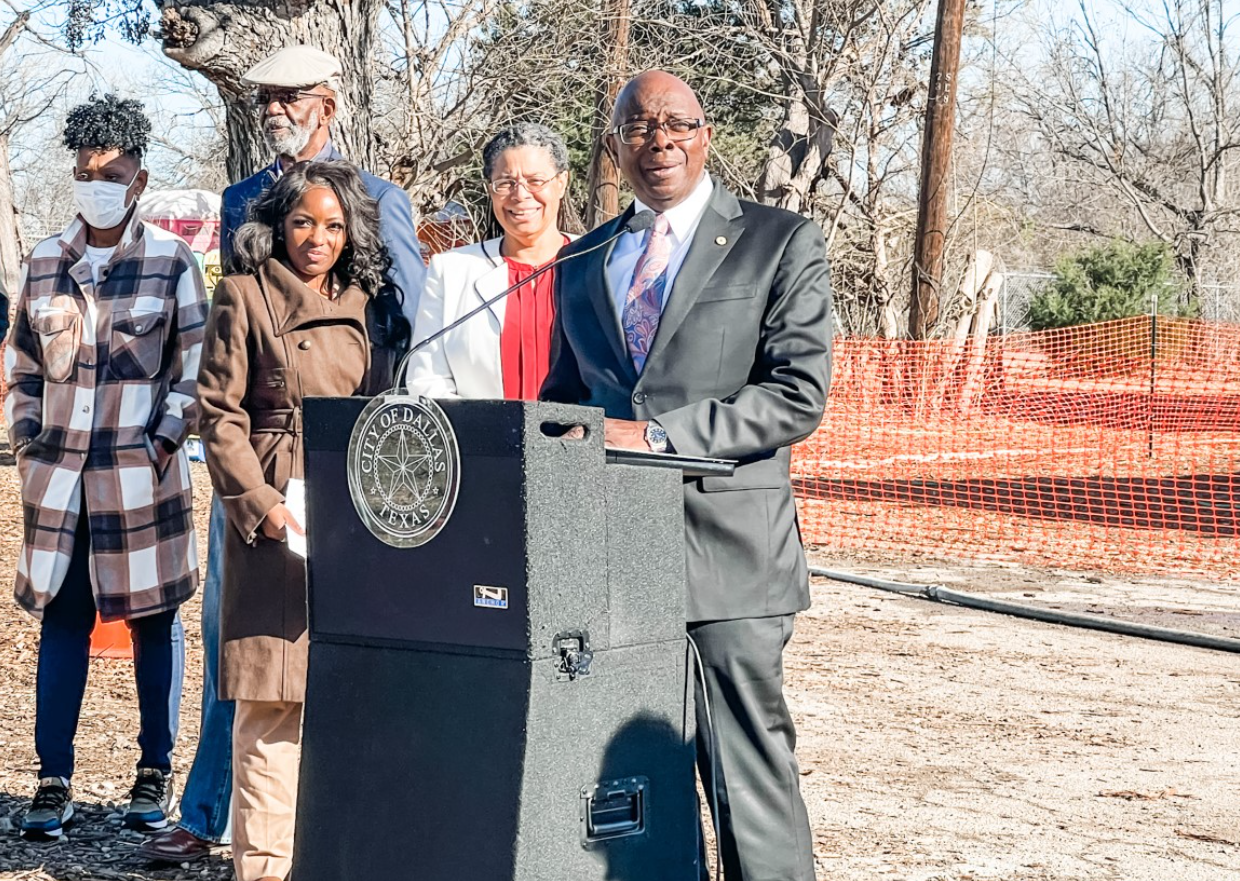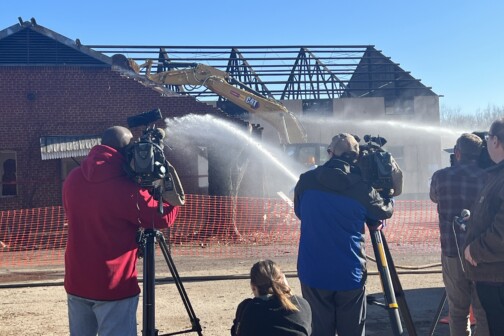On Thursday morning, cars lined up along Bonnie View Road and stared at something that has drawn the ire of locals for years. Elected officials, the press, and neighbors converged on this toxic waste site in southern Dallas to finally watch something positive happen here.
“What are all y’all doing out there?” a woman yelled out the window of her car.
“Tearing down a building,” someone responded.
“GOOD,” she said before speeding away.
That response was echoed by others who live near the Arden Terrace community just south of Ledbetter Drive. They have watched Lane Plating Works sit dormant for four years, the amount of time the Environmental Protection Agency has spent trying to figure out how to safely dismantle it. The electroplating factory has been perched on Bonnie View Road since 1950. In 2018, it was determined that the property was so toxic that federal and state environmental agencies needed to intervene.
It closed when the company filed for bankruptcy in 2015. It was added to the roster of the EPA’s Superfund sites in 2018. (A Superfund site is part of an environmental program that addresses abandoned hazardous waste sites.) The Texas Commission on Environmental Quality and the federal agency found evidence in 2016 that the company had contaminated the land upon which it sits with the byproducts of its business—dangerous waste in the form of hexavalent chromium, arsenic, lead, and more.

A 2016 report from the EPA said that nearly 94 tons of toxic waste was carted from the site, and a TCEQ report the following year found that they could not locate accurate summaries from the company regarding its hazardous waste disposal. The EPA determined that the company “copied and pasted the same annual waste summaries for the last three years of operation.”
In September, federal officials learned that the building was being used as shelter by unhoused individuals and that, at some point, toxic hexavalent chromium had been unleashed inside the building. That month, the agency told the neighborhood and the EPA that it would move quickly (for the government, at any rate) to finally demolish the site once and for all.
This brings us to Thursday’s gathering.
“It’s a good day,” said a beaming Allen McGill, who chaired the Lane Plating Community Advisory Group. “A really good day.”
Dallas environmental commission member Temeckia Derrough, who lives in District 7, was almost giddy.
“We’ve waited four years for this,” she said.
Dallas City Councilman Tennell Atkins, whose southern Dallas district includes the Lane Plating site, was joined by McGill, EPA Regional Administrator Dr. Earthea Nance, U.S. Rep. Jasmine Crockett, and EPA on-site coordinator Eric Delgado to mark the occasion.

“It’s been a long time waiting for this demolition to occur,” Atkins said. “It’s a process that started last year, and we start today with the demolition. This community deserves this demolition.”
Crockett said that the fate of the Lane Plating site underscored the need for attention to both environmental justice and climate justice.
“The connections between air pollution, underlying health conditions, and COVID-19 outcomes are inextricably linked particularly in Black and Brown communities,” Crockett said. “One of the reasons why I ran for Congress was to fight for a safer, healthier and cleaner Dallas.”
Air monitors on the site will help the agency monitor air quality, making sure asbestos and other contaminants do not harm the community while the demo work is performed. Delgado explained that once the building is torn down and carted off, which will be done by the end of February, the next step will be removing the contaminated soil. He estimates that the EPA will excavate about 11,000 tons of soil before replacing it with clean dirt.
“That’s a lot,” he said. “That’s the most I’ve ever done in my career.”
At the end of all those remarks, EPA construction crews fired up the water cannons to keep debris from becoming airborne, and the excavator went to work. For a while, the crowd remained, watching as the aging building fell brick by brick, reluctant to leave.
“It’s a good day,” Delgado said, gently and politely prodding the stragglers who wanted to watch the satisfying sight so long in the making. “But we’ve got to get to work.”
Get the D Brief Newsletter
Author




